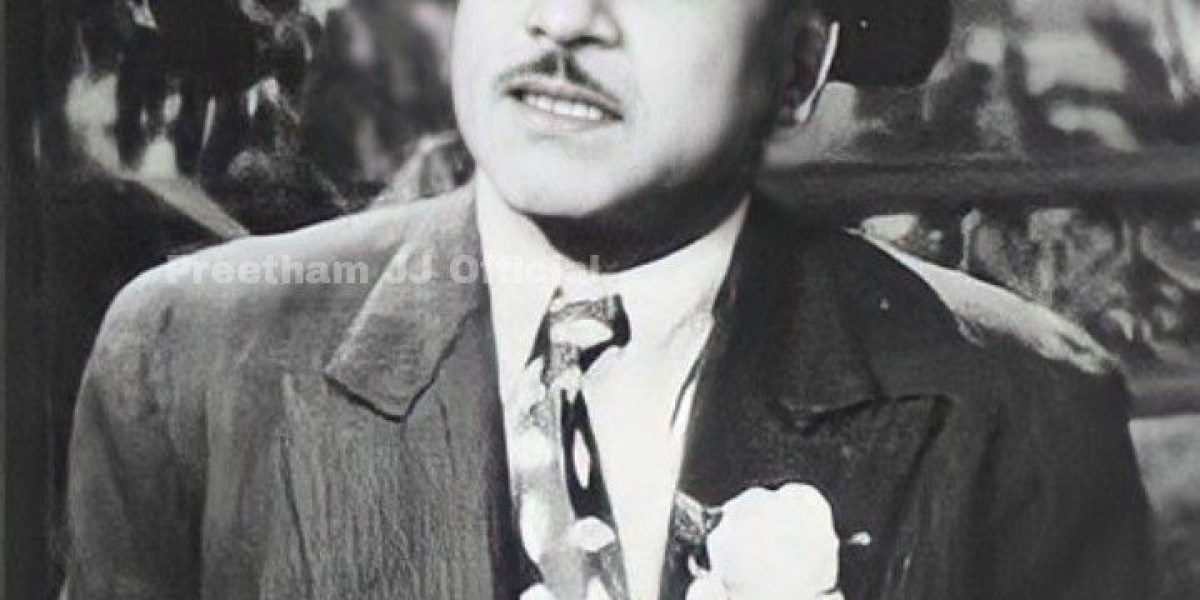Who is M. R. Radha?
Madras Rajagopalan Radhakrishnan Naidu, popularly known as M. R. Radha, was born on April 14, 1907, in Chintadripet, Madras (now Chennai), in the erstwhile Madras Presidency. He hailed from a modest family, and a young age, Radha exhibited a remarkable aptitude for performance and theater. His early exposure to street plays and the bustling life of Madras kindled in him a passion for acting, which would eventually lead him to become one of the most formidable character actors in Tamil cinema.
Radha was not just an actor but a man of many convictions. His ideology was firmly rooted in rationalism and the Dravidian movement, which sought to challenge the social inequalities ingrained in caste and religion. His commitment to these causes resonated in his film roles and his personal life.
Nirosha: The Wife of a Legend
Nirosha, the spouse of M. R. Radha, was an essential part of his life, providing support throughout the tumultuous years of his career and personal controversies. Little is known about her in the public domain, as she maintained a low profile compared to her larger-than-life husband. However, it is said that she played a stabilizing role in Radha’s life, particularly during the difficult periods following the shooting incident involving MGR.
While Radha was known for his aggressive and rebellious nature, Nirosha is remembered as a quieter, more reserved figure who managed the household and raised their children. Her contributions, though behind the scenes, were significant in maintaining a sense of normalcy in a household that was often in the spotlight due to Radha’s fame and controversies. She was a constant presence in his life, supporting his artistic endeavors and standing by him during the most challenging moments.
Though not much is written about her, Nirosha’s influence can be seen in the lives of their children, who have all gone on to lead successful careers. Her resilience and ability to manage a family in the midst of such chaos is a testament to her strength, making her an integral part of M. R. Radha’s legacy.
Theater Career: The Foundation of a Titan
Radha's initiation into acting began in the theater, where his talent was quickly recognized. He joined theater troupes at a young age, often playing female roles initially, as was customary in many troupes of the time due to the scarcity of women actors. His breakthrough came with his association with prominent drama companies, where his fiery performances won him both acclaim and a large following.
One of the landmark plays that shaped his early career was "Ratha Kanneer" (Blood Tears), where he portrayed a debauched, upper-class man who returns to his senses after experiencing the consequences of his immoral life. Radha’s performance in this play was so powerful and intense that it left a lasting impression on audiences, marking him as a force to be reckoned with in Tamil theater.
The success of "Ratha Kanneer" propelled Radha to stardom in the theatrical world, and his distinctive voice, combined with his raw and aggressive acting style, made him an iconic figure in Tamil drama. His roles often had a moral undertone, and he became known for playing characters that conveyed the harsh truths of society, particularly in the context of casteism, classism, and religious dogma.
Transition to Cinema: The Rise of a Character Actor
M. R. Radha’s transition to Tamil cinema was seamless due to his formidable presence on the stage. His cinematic debut came in the late 1930s, but it was in the 1940s and 1950s that Radha truly established himself as a significant force in Tamil cinema.
Radha was primarily a character actor, but his performances were so compelling that they often outshone the heroes of the films he was in. Unlike the traditional villains of Tamil cinema, who were often portrayed as one-dimensional, Radha's villains were multi-layered, with distinct personalities and ideologies. He was known for portraying antagonists who were more human than evil, making them relatable to the audience.
One of his most notable performances came in the film "Ratha Kanneer" (1954), the film adaptation of the play that had made him famous. His portrayal of the flawed protagonist, Mohan, a man corrupted by wealth and arrogance, resonated deeply with viewers. His character's downfall was a powerful commentary on the social mores of the time, and Radha’s nuanced performance was widely praised.
Another iconic role of Radha’s was in the movie "Ambikapathy" (1937), where he played a pivotal role. He acted in over 200 films, showcasing his versatility by performing in roles ranging from a cruel zamindar to a compassionate elder. His ability to deliver dialogues with exceptional timing and his mastery over emotive expression made him an unforgettable part of Tamil cinema.
Also Read: Buy Verified Wise Accounts
Ideological Influence: A Rationalist and Revolutionary
M. R. Radha was much more than just an actor. His strong affiliation with the Dravidian movement, led by figures like Periyar E. V. Ramasamy, deeply influenced his personal and professional life. Radha was an ardent supporter of the principles of rationalism and anti-Brahminism. He sought to use his fame and influence to critique the caste system, superstition, and religious hypocrisy.
Many of his roles in cinema and theater reflected these beliefs. He was unapologetically vocal about his opposition to religious practices and social norms that, in his view, perpetuated inequality and ignorance. He often played roles that mocked or criticized religious figures, which led to some controversies but also earned him a strong following among rationalists and reformers.
Radha’s fiery speeches and public appearances drew large crowds, and his sharp wit and fearless stance on controversial issues made him a much-admired figure among the followers of the Dravidian movement. His association with leaders like C. N. Annadurai and M. Karunanidhi further solidified his status as a cultural icon who went beyond the screen to influence Tamil society at large.
The Shooting Incident: A Dark Chapter
M. R. Radha’s life was not without its share of scandal. One of the darkest moments in his life occurred on January 12, 1967, when Radha was involved in a sensational shooting incident with Tamil cinema’s most beloved star, M. G. Ramachandran (MGR). The incident occurred at Radha’s residence, where MGR had gone to discuss a film project.
In a shocking turn of events, Radha shot MGR twice, once in the neck and once in the ear. Remarkably, MGR survived the attack, but the incident left him with permanent damage to his vocal cords. The reasons behind the shooting remain unclear to this day, with various theories ranging from personal grudges to political motivations. Radha himself claimed that it was an accident, but the controversy surrounding the incident lingered for years.
Radha was arrested and stood trial for attempted murder. He was convicted and sentenced to seven years in prison but was released after five years due to good behavior. Despite the gravity of the incident, Radha’s popularity did not wane entirely. Upon his release, he returned to acting, though the incident cast a long shadow over his later career.
Legacy in Tamil Cinema
M. R. Radha's contribution to Tamil cinema and theater remains monumental. His unique style of acting, characterized by fiery dialogue delivery, sharp wit, and a deep sense of realism, set him apart from his contemporaries. He was not content with merely playing a role; he embodied the character, often blurring the lines between the actor and the person.
Radha’s influence extended beyond the screen, as he became a symbol of resistance against orthodoxy and social injustice. His films and plays tackled taboo subjects, offering critical perspectives on society’s ills. Even though he was often cast as a villain, Radha's portrayal of these roles challenged traditional notions of good and evil, making his characters more relatable and nuanced.
His contributions to Tamil cinema are still celebrated today. Actors, filmmakers, and audiences continue to reference Radha’s iconic roles and performances as benchmarks of excellence. In the pantheon of Tamil cinema, M. R. Radha holds a special place as a pioneering actor who used his craft as a medium for social commentary.
Personal Life
M. R. Radha had a colorful and eventful personal life. He was married several times and had numerous children, many of whom followed in his footsteps into the world of acting. Among his notable children are Radha Ravi and Radhika Sarathkumar, both of whom have carved out successful careers in Tamil cinema and television.
Radha was known for his candidness and his often irreverent sense of humor. Despite his tough, larger-than-life persona on screen, those who knew him personally spoke of his generosity and warmth. He was deeply committed to his ideological beliefs and remained a staunch advocate of rationalism until the end of his life.
Final Years and Death
M. R. Radha continued to act in films and plays well into his later years, despite the controversies that had clouded his career. He remained an active participant in public life and continued to voice his opinions on political and social issues.
He passed away on September 17, 1979, at the age of 72. His death marked the end of an era in Tamil cinema, but his legacy lives on through his body of work and the lasting impact he had on the film industry and society at large. M. R. Radha is remembered not just as an actor, but as a cultural icon who used his fame to advocate for social change.








